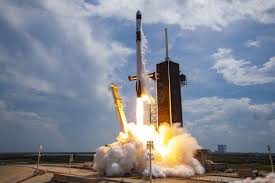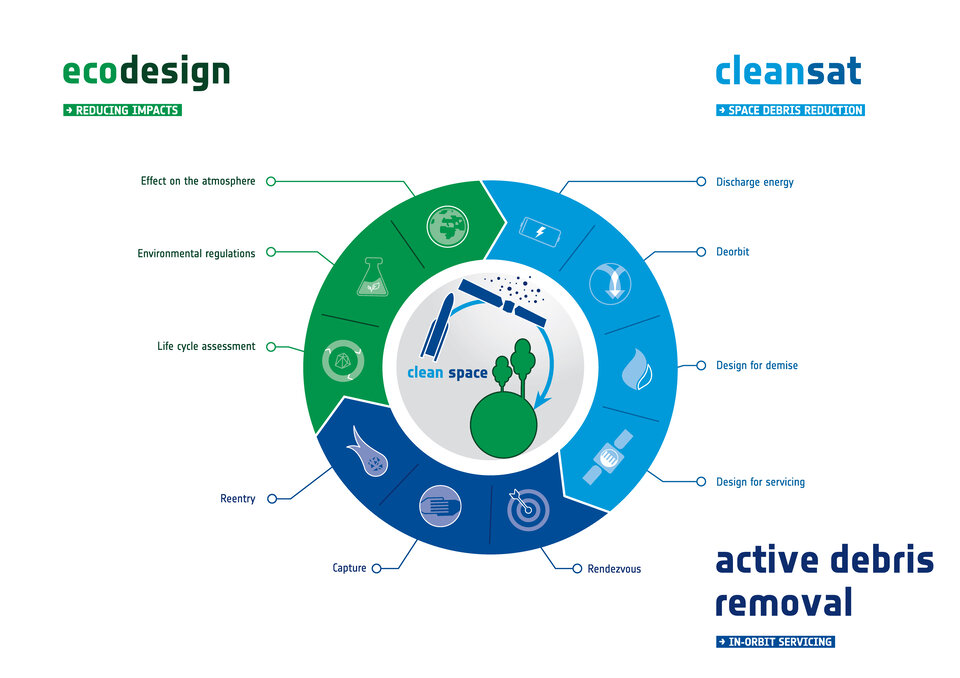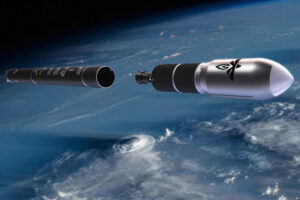Greener Fuels and Less Waste: Striving for Sustainable Space Flight.
30th Sep 2021
A long time has passed since space was first dubbed “the final frontier”. With technology evolving at a neck-breaking speed space has ceased being the stuff of science fiction and is now more accessible than ever, as long as your bank account can handle the cost. Moreover, you don’t even have to leave the atmosphere to feel the impact that the space industry has had on the world. We utilise and enjoy gifts given to us by space-related technologies every day in the form of GPS, weather forecasts, satellite TV, the internet, and countless others. However, as more and more people are starting to pay closer attention to the broader problem of sustaining Earth as humanity’s only home in the universe (so far), sustainability of space travel and exploration has become a major issue as well.
Is sustainability achievable?
At a first glance sending huge chunks of metal into space by burning tons upon tons of fuel doesn’t seem like something that can even theoretically become more sustainable. The launch phase has historically been, and still remains, the most environmentally harmful stage of any space mission. The fuel needed to launch SpaceX’s Falcon 9 rocket into orbit leaves almost 336 tonnes of CO2 in the atmosphere after burning, which is about as much CO2 as 15 cars produce during their entire lifespan, on average. Additionally, the things we launch into space more often than not can never be used again – they will either burn up during reentry, like most fuel tanks and boosters do, or stay in orbit as plain old trash after their operational period is over. The environmental footprint of launch pads and spaceports has also come under scrutiny in the more recent years, as more and more of them are needed and are being built.
What is making this issue even more severe is the fact that we are seeing a dramatic increase in the number of space launches, as commercial spaceflight has become a major contributing factor. There were around 110 total launches in 2020, but some experts estimate that reaching 1,000 and more yearly launches is quite possible in the near future. If this increase happens with no regard to the environment and without using cutting-edge green technologies the impact on the planet can be disastrous. Therefore sustainable rocket fuels and reusable rockets are the top priorities for greener space travel right now.
Taking a look at rocket fuels
Modern spacecraft use a variety of propellants, but the majority of launches rely on fossil fuels. Hydrogen fuel has been looked at as the greener option, and it is what is used by both NASA and some private companies, like Blue Origin. Manufacturing liquid hydrogen is an extremely energy-consuming process, however, and since humanity is far from relying on purely renewable sources of energy this adds to the overall carbon footprint of these launches. A brand new approach is needed to tackle this problem, and the UK-based privately-owned space company Skyrora has developed just that. Their proprietary fuel Ecosene is manufactured by utilising an innovative plastic recycling method and surpasses kerosene by its energy characteristics. This solves two problems at the same time – recycling the plastic pile up here on Earth while producing highly sought-after rocket fuel.
Waste on Earth, waste in space
Reducing the amount of waste is another approach that must be taken to ensure that the space industry becomes greener. Rockets, boosters and fuel tanks most often either burn up during launch or re-entry or can be used merely a few more times before they are discarded. The satellites and other objects we leave in orbit are also becoming an issue since we currently have no option to service or even decommission them in a safe and consistent way. The amount of old and defunct satellites in orbit will reach a critical point soon, so companies that launched them should be responsible for their removal as well.
Steps to fight excessive waste in the space industry are already being taken. The above-mentioned Falcon 9 launch vehicle can theoretically be reused up to 100 times. Building more modules with reusability in mind is crucial for the future of space exploration. Furthermore, the European Space Agency has contracted the Swiss start-up company ClearSpace SA for the first-ever space mission to remove an item of space debris in orbit. This mission is scheduled to take place in 2025. This is only a small part of the ESA’s Clean Space initiative and the agency itself states that “scientific models estimate that there are around 900 000 objects larger than a marble in orbit around Earth, and more than 128 million objects larger than 1 mm”.
Organised initiatives
The European Space Agency launched the Clean Space initiative back in 2012 to consider the environmental impact of the entire lifecycle of space missions. They aim to address the environmental impact of space launches, the future production of space debris and the removal of the debris that is already present. NASA also has similar programs and initiatives in place.

One more way that the space industry can help offset its impact on the environment is by developing new technologies. If a new alloy or material is developed for space exploration that can be later used on Earth to reduce emissions in other sectors then that goes a long way towards making the space industry more sustainable. Space-related research has already produced incredible results, and will only continue to do so in the future. Even tracking and measuring the climate crisis would be impossible without using satellite technology.
What can we do to help?
We still have a long way to go to make space travel a sustainable reality for humanity. While some advances, like the ones listed above, are being made in this field, overall it is still a very pressing issue. One variable that is missing from the equation is governmental policy. Companies like Skyrora and ClearSpace SA can only go so far on their own, and while space agencies like ESA and NASA are government-funded, more involvement is definitely required. Countries and governments must start setting regulations and developing sustainability-focused frameworks for space activities. If more worldwide cooperation is established and eco-initiatives in space companies start receiving more support and funding we might very well see the start of sustainable space travel in our lifetimes. Seeing how a lot of the necessary technologies already exists, we should encourage our governments to do just that.






Thank you for your comment! It will be visible on the site after moderation.